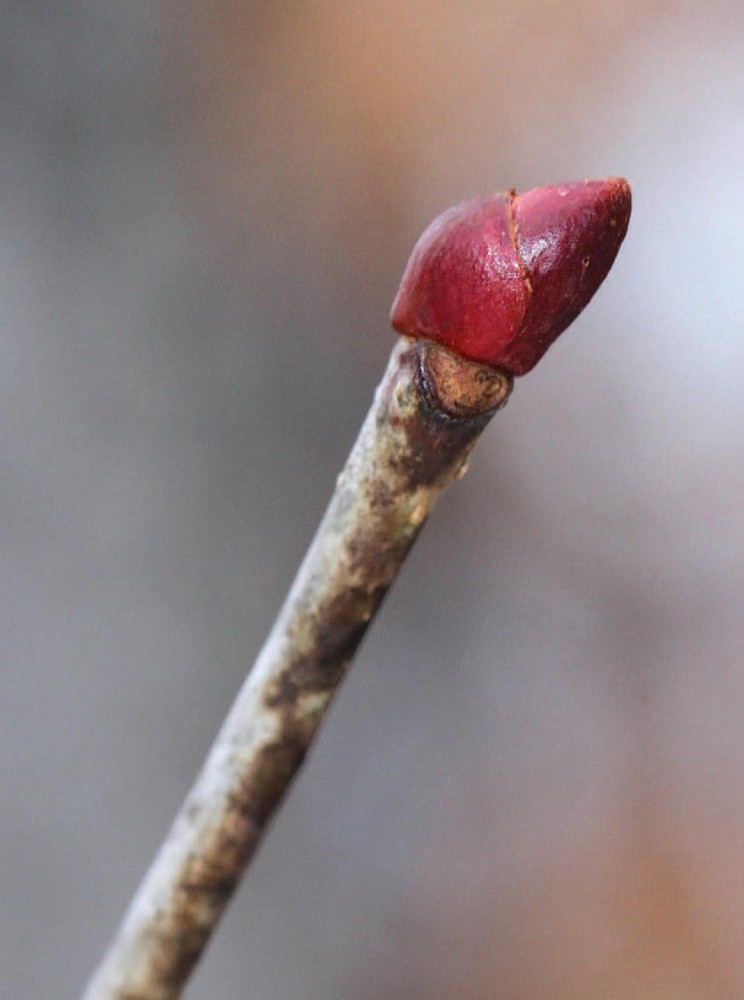
American basswood (Tilia americana) is known for the alluring scent and abundant nectar of its flowers, as well as its lightweight, odorless wood that lends itself to the production of food crates and boxes, musical instrument parts, yardsticks, and cabinets. Basswood trees are not as dependent on seed germination as many other species due to their ability to put out new shoots from their stump or roots if cut down or damaged, a process known as self-coppicing. The tree’s distinctive nutlets are borne on a stem bearing a persistent bract, or modified leaf, that aids in the wind dispersal of the fruit. Most of the nutlets are eaten in the fall by chipmunks, mice, squirrels, porcupines, and rabbits, but some persist until winter winds detach them from the tree and they fall to the ground. One way to identify American basswood (also known as American linden) during winter is by examining its buds. Its plump, oval, asymmetrical reddish or green buds bear only one or two bud scales.

